- How to Propagate Monstera Guide: The Three Ways to Succeed - September 17, 2021
- Escargot Begonia: Why Is The Rex Begonia So Rare? - August 31, 2021
- Rieger Begonia: When You Can Expect The Hiemalis Begonia To Flourish - August 31, 2021
Peperomia Argyreia is an adorably compact perennial plant with striking foliage. It comes from South and Central America and is a part of the Piperaceae plant family. While its common name may lead some to believe that it is related to either watermelons or begonias or both, in actuality, it is not related to either.
How to Identify Watermelon Begonia
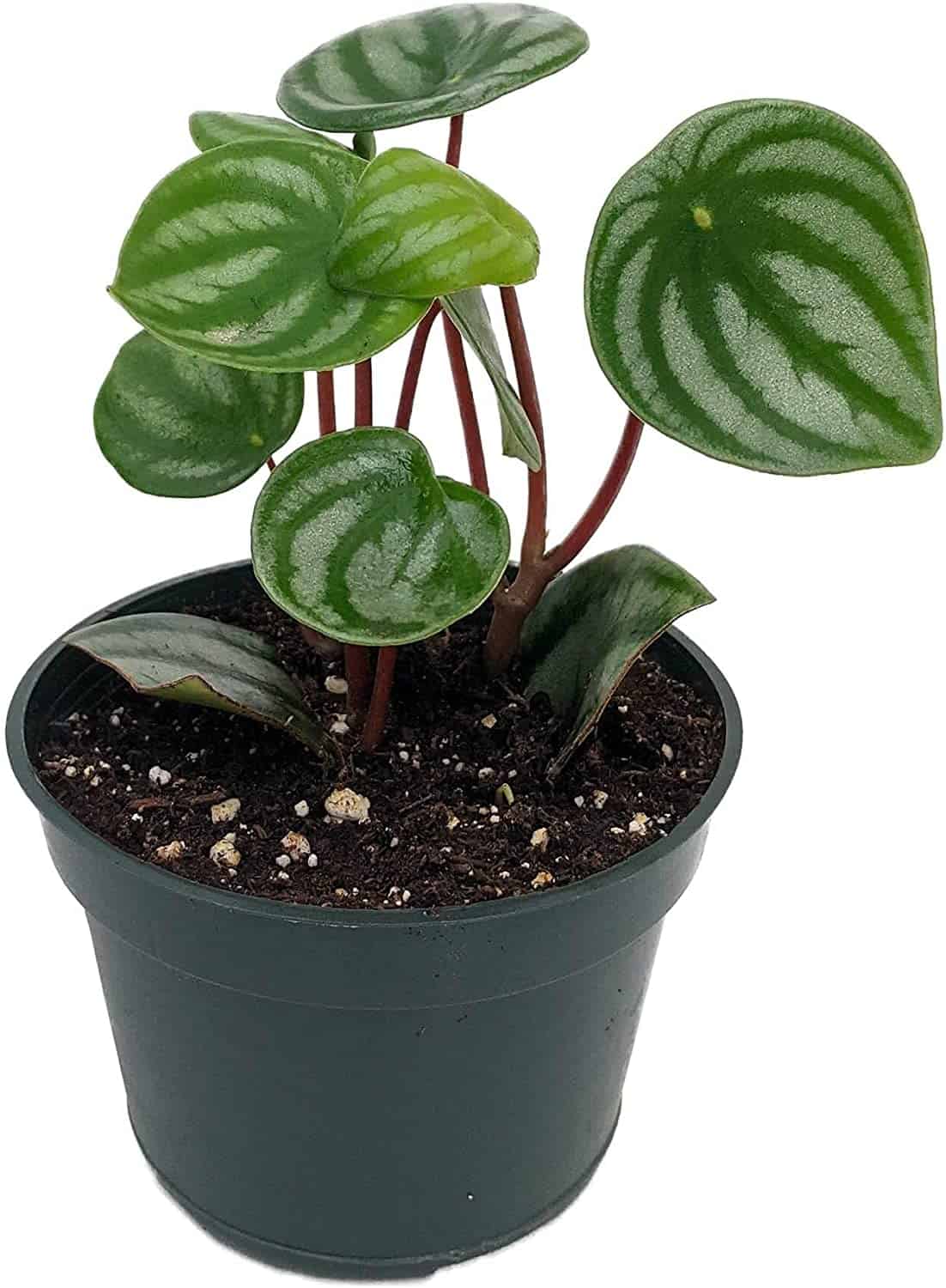
The striking foliage of this compact plant gives it away quickly. When you are trying to identify a Watermelon Begonia, look for a plant that grows thin but sturdy red vines with oval-shaped leaves. These leaves are striped in silver and green, which is why it has received a moniker that includes ‘watermelon’ in it. Just take a quick look at this plant and you will realize that its name is very descriptive of its look.
How to Grow Watermelon Begonia from Seed
Most gardeners do not choose to grow Watermelon Begonia from seed simply because it takes a long time to realize any significant growth. But just because it is not the preferred method does not negate it from being a fun way to garden. If you are determined to grow one of these cacti via seeds, follow these steps:
- Purchase seeds from a reputable seller (sellers who price their seeds between $1 and $2)
- Fill a container with a soilless seed starting mix
- Plant the seeds in the seed starting mix
- Water the mix so that it is moist but not soggy
- Place plastic wrap over the top of the container
- Set the container in a warm spot that gets plenty of bright, indirect sunlight
- Once sprouts appear, transplant the seeds to a container filled with soil that has a pH level between 6 to 6.5
How to Propagate Watermelon Begonia
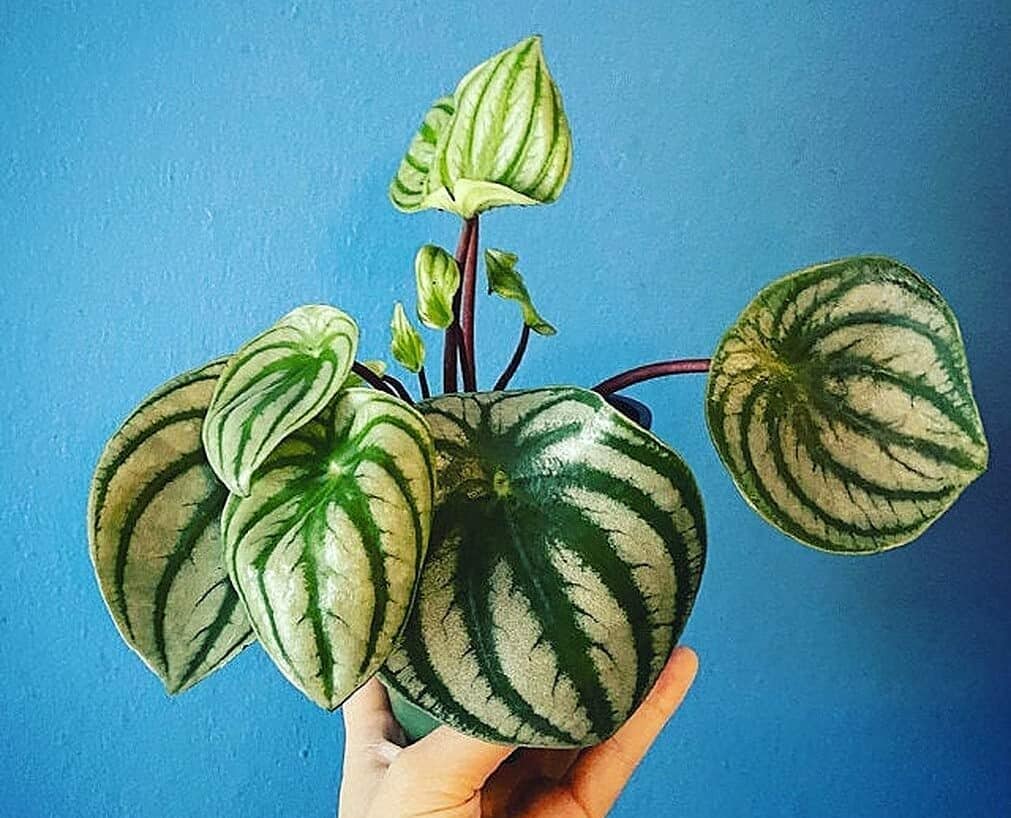
The preferred method for propagating one of these plants is leaf cuttings. This is a simple and straightforward process that can be done during spring pruning sessions or anytime you feel like adding an additional plant to your garden.
If you’re interested in using this method, follow these steps:
- Clean a pair of scissors or another type of cutting utensil
- Cut off a healthy leaf that includes a petiole
- Set the leaf out for a few days to allow it to callus
- Fill a plant container with well-draining soil that includes 50% peat and 50% perlite
- Dip the end of the leaf in a rooting hormone
- Stick the leaf into the soil
- Set the plant container in an area that is warm and receives plenty of indirect or filtered sunlight
- Water the new plant when the top layer of its soil is dry
Watermelon Begonia Growing Conditions
These plants come from very warm and humid areas in South and Central America. Because they are designed to live in this part of the world, Watermelon Begonias require temperatures that range between 65 and 75 degrees Fahrenheit. On top of these high temperatures, they also need extra humidity if the air around them is dry.
You have the choice to either keep your home temperatures and humidity levels high or, you can provide your Watermelon Begonia with a Pebble tray or a Plant humidifier to provide extra humidity and a Plant Heat Mat to provide extra warmth. These technologies allow you can keep your plant comfy and cozy while not getting stuffy and sticky in your own home.
How to Plant Watermelon Begonia
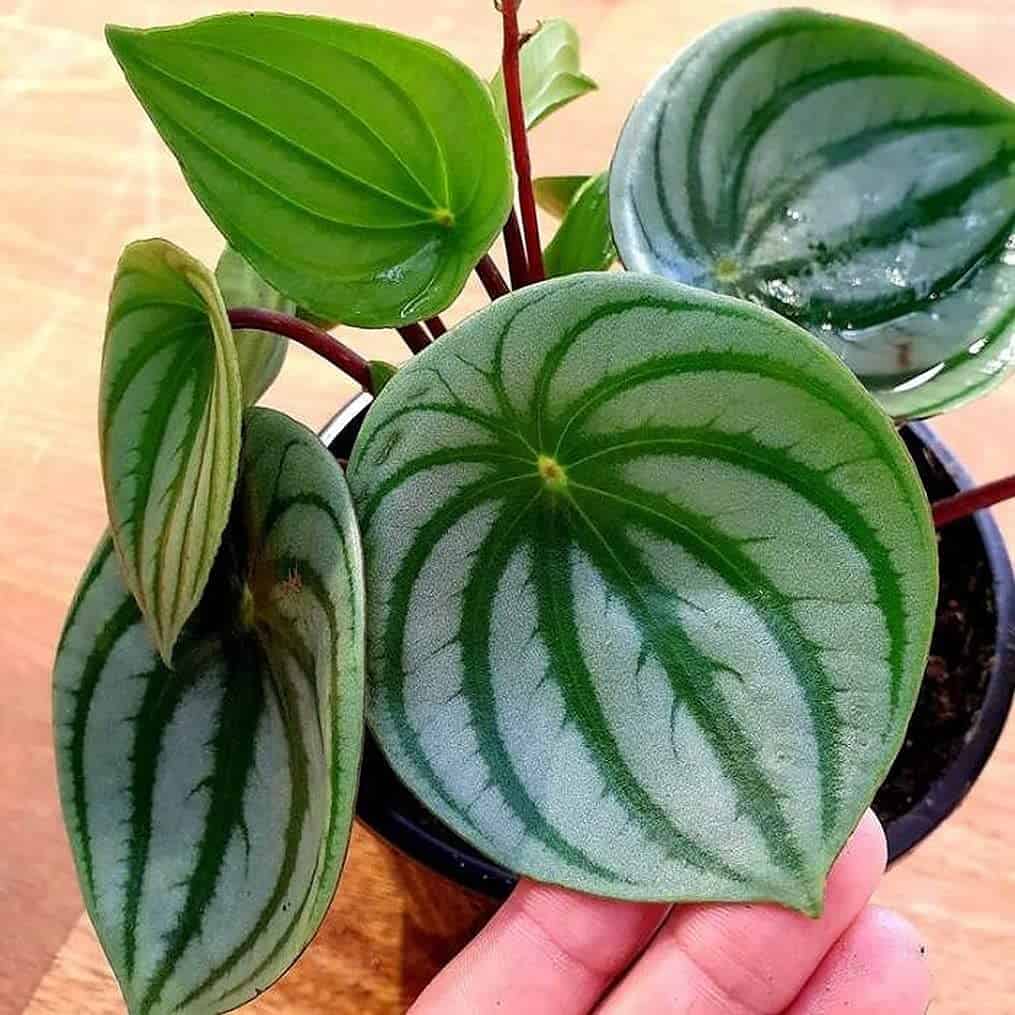
This type of plant does not mind being tight and cozy in its plant container but it can still benefit from getting new soil every two to three years. The new soil will provide the plant with extra nutrients and help keep the pot clean from pest infestations and diseases.
Keep an eye out for the following signs to know whether or not your plant needs repotted before two to three years has passed:
- Compacted Soil
- Roots that are crowded and growing into a ball formation
- A plant that looks too big for its current container
When it comes time to repot your Watermelon Begonia, follow these steps:
- Fill a container with potting soil (if the plant has outgrown its current container, choose a new container that is two inches larger in diameter)
- Create a hole in the soil for the plant to set inside
- Carefully remove the plant from its current container
- Gently dust off any excess soil from its roots
- Set the plant into the hole in the new container
- Spread the soil around so that the plant is secure in its new container
- Water the plant
- Set it in a warm spot with indirect sunlight
Watermelon Begonia Potting & Soil
To reduce the chance of root rot, pest infestations, and other diseases, choose potting soil that can drain off excess water well. Don’t forget to choose a plant container that will also drain out excess water. These two items can make or break the health of your Watermelon Begonia.
Try these recommended products for your Watermelon Begonia:
- The Succulent Cult’s Organic Succulent & Cactus Soil Mix
- Succulent Pot Set
Watermelon Begonia Water Requirements
Learning how to properly water a plant is the most important aspect of gardening. Since this type of plant is highly susceptible to root rot from overly saturated soil, it is best to use the soak and dry method when watering it. It is a very simple method with six steps:
- Test the plant’s soil before watering it. It should only be watered if the top two inches are dry. If those top two inches are still moist, wait another day to water it.
- Fill a tray or a tub with water.
- Set the plant container in the water, but make sure the water isn’t so deep that it will overflow the lip of the container. The point of the soak and dry method is to utilize the drainage holes in the plant container to soak up water from the bottom.
- Let the plant soak up water for fifteen minutes.
- Remove the plant from the water.
- Set the plant in a spot where the excess water can drain from the container’s drainage holes.
If you are still unsure about how and when to water your Watermelon Begonia, try using a plant watering app. This technology can assist you in keeping track of when you watered your plants, remind you to water your plants, and answer questions about your plants.
Watermelon Begonia Light Requirements
While this plant does love heat and humidity, it is a delicate plant that cannot handle direct sunlight. It should not be set in direct sunlight since this will burn its leaves and cause the color of the leaves to fade.
The best type of sunlight for a Watermelon Begonia is bright sunlight that is either filtered by a shade or is indirect. If you are uncertain about how to properly set up your plant for sunlight success, use either a light meter or a light meter app to assist you.
Best Watermelon Begonia Fertilizer
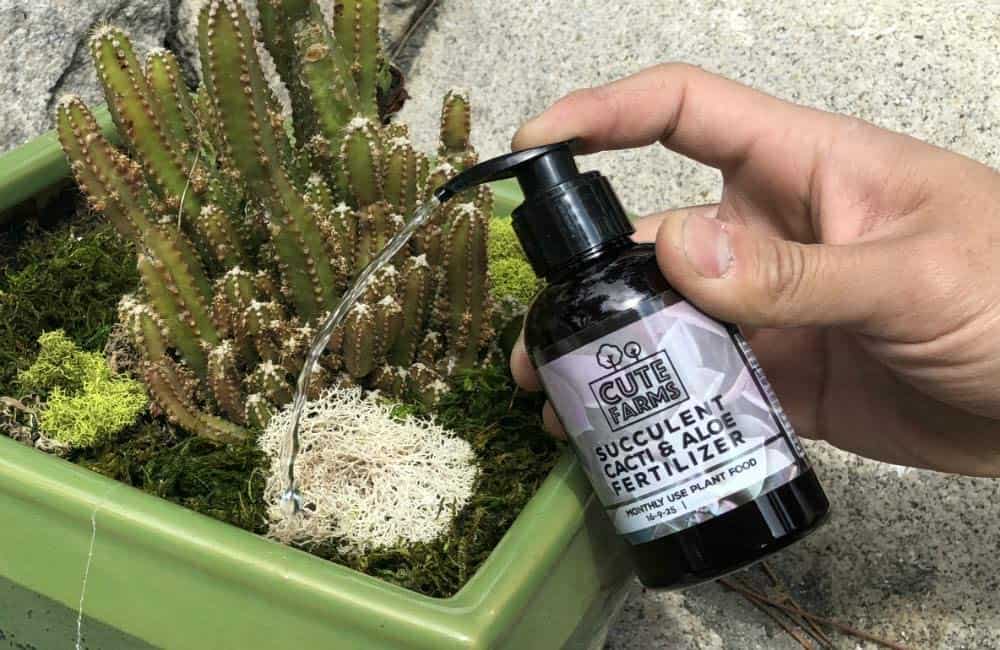
This plant does not need to be fertilized during autumn or winter, so only plan to give a few feedings in spring and summer. When you do feed your Watermelon Begonia, be sure to dilute the dosage to 50% and spread out the feedings to every 2 to 4 weeks.
Try Cute Farms Succulent Cacti & Aloe Fertilizer for this plant.
Best Watermelon Begonia Companion Plantings
Clustering one of these plants with other humidity-loving plants is a great way to guarantee that they all receive adequate amounts of warm moisture. So, when you purchase multiple plants, you’re actually doing all your plants a favor. Here are a few plants that will provide your Watermelon Begonia with extra humidity and aesthetic appeal.
Peperomia Hope
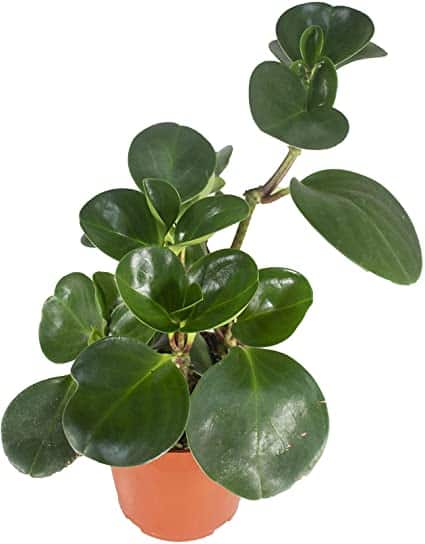
Stick with a member of the family and ensure that you won’t have to deal with any other technical gardening methods. Plus, they will look really awesome together.
Pros
- Peperomia Hope is easy to learn how to care for
- Peperomia Hope has many care requirements that are similar to those of Watermelon Begonia
- Peperomia Hope is not toxic
Cons
- Peperomia Hope is susceptible to infestations of aphids, mealybugs, and scale bugs
Callisia Repens
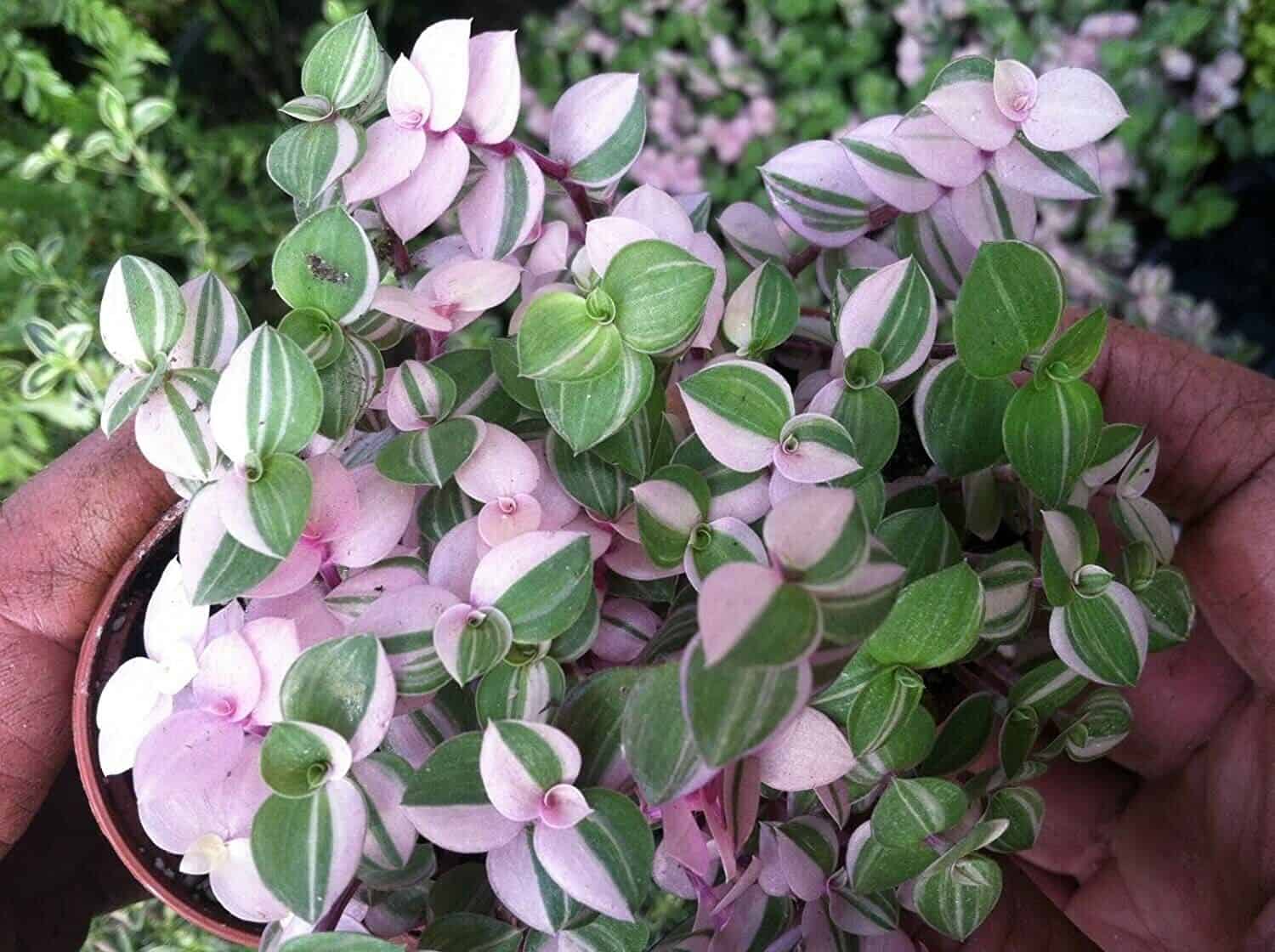
This native of the tropical regions of South and Central America is actually semi-succulent. It grows vining stems covered with soft and tiny leaves shaded in purple and green.
Pros
- Callisia Repens is very easy to care for
- Callisia Repens is easy to propagate
- Callisia Repens has care requirements that are similar to those of Watermelon Begonia
- Callisia Repens is not toxic
Cons
- Callisia Repens is susceptible to infestations of aphids and mealybugs
Angel Wing Begonia

This is a really unique-looking plant that is also from South America. It is going to be a beautiful addition to your plant family.
Pros
- Angel Wing Begonia is easy to care for
- Angel Wing Begonia has care requirements that are similar to those of Watermelon Begonia
- Angel Wing Begonia is deer resistant
- Angel Wing Begonia is easy to propagate
Cons
- Angel Wing Begonia is not cold hardy
Watermelon Begonia Diseases and Common Problems
Here is a list of the most common issues faced by these plants. In this list is information on how to identify and treat each issue.
Mealybugs
Evidence of an infestation of mealybugs is small white spots that look like cotton on leaves and stems. To deal with an infestation of mealybugs, follow these steps:
- Spray a solution of alcohol and water on the leaves
- Rub the leaves with a cotton ball
- Coat the leaves in neem oil or insecticidal soap every few days
Spider mites
Evidence of a spider mite infestation will show up as webbing on the leaves and stems. Sometimes the tiny insects will even be visible crawling around the plant. To treat this type of infestation, fill a spray bottle with a quart of warm water, 1 tsp. of dish soap, and 2 tsp. Of neem oil. Use this mixture to spray and wipe the leaves and stems of the plant clean. It may be necessary to repeat this process several times to rid the plant of all the insects.
Yellowing Leaves
Figuring out what is causing the leaves of a Watermelon Peperomia to turn yellow will be a process of elimination. It could be caused by any of the following:
- Excessive sunlight
- Too little or too much water
- Nitrogen deficiency
Watermelon Begonia Treatments and Maintenance
The best treatment is prevention. If you want healthy plants, learn what their care requirements are and learn a few maintenance techniques to keep them in optimal health. Here are few tips to help keep any of your plants healthy and disease-free:
Check it for signs of disease and infestations regularly, and treat them quickly.
- Clean the plant regularly with neem oil.
- Learn how to properly water and feed your plant.
- Make sure your plant is set in an area with adequate amounts of sunlight, heat, and humidity.
- Mix diatomaceous earth into the soil of potted plants.
Where to Buy Watermelon Begonia Seeds Online
Before you purchase seeds online, confirm that the seller is reputable and is selling a correctly labeled product. If you would like to purchase seeds to grow your own Watermelon Begonia, start with these online shops:
Where to Buy Mature Watermelon Begonia Online
Since these are very popular plants, they are easy to find for sale at many online shops. Begin your search for your next plant here:
- Green Door Garden
- Costa Farms
- Soil and Clay
FAQs
Question: Is Watermelon Begonia Toxic?
Answer: No, this plant is not toxic.
Question: How Large with My Watermelon Begonia Grow?
Answer: Remember this is a compact and slow-growing plant. You shouldn’t be worried about growing anything gigantic here. This is a perfect plant for a window sill garden since it only grows up to a foot tall.
Question: Does Watermelon Begonia Produce Blossoms?
Answer: No, it really does not. In the springtime, it will grow small spikes that are green. These are considered the plant’s flowers.
In Conclusion
Watermelon Begonia is certainly a favorite for most gardeners. It is so cute and unique but it is also so easy to grow and care for. If you decide to get one, you are going to enjoy it so much.
Research Citations
- Plant Care Today
- House Plants Expert
- Wikipedia

